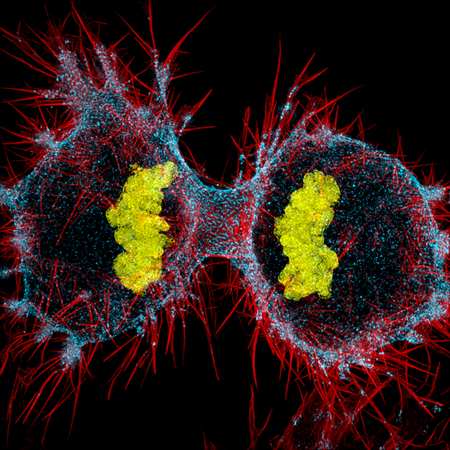
A colorful image of a dividing cancer cell, submitted by Dylan Burnette, Ph.D., assistant professor of Cell and Developmental Biology, won 12th Place in Nikon’s Small World 2016 Photomicrography Competition.
Burnette captured the image using a “structured illumination microscope,” which is housed in Vanderbilt’s Cell Imaging Shared Resource. This advanced microscope shines different patterns of light on a sample to reveal information that is blurred by older microscope designs.
Burnette and his team are exploring the last steps of cell division: how the two daughter cells physically separate from each other. In the image of a dividing HeLa cell, DNA (yellow), structural actin filaments (red) and a molecular motor protein called myosin II (blue) are labeled.
HeLa cells, originally isolated in 1951 from a cervical tumor removed from a woman named Henrietta Lacks, are a common model system for studying the basic processes governing cell growth and division. These processes are critical for normal development and organ function, and they go awry in diseases including cancer.
Six of Burnette’s images have been honored in Nikon’s Small World competition since 2004.















